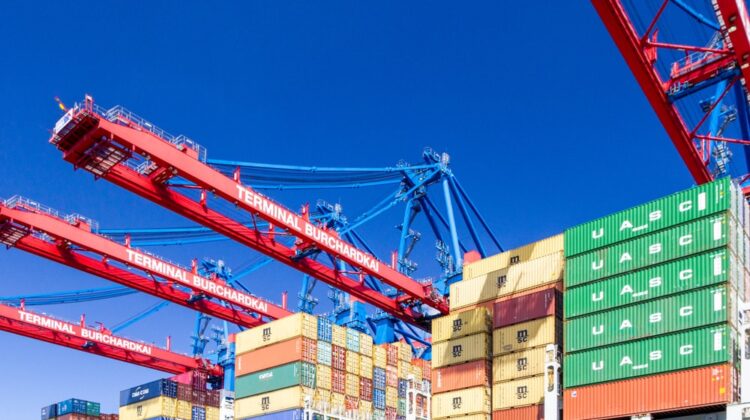
Freight forwarding market recovering with growth expected at 8.7% in 2021
Transport Intelligence’s (Ti), latest report, Global Freight Forwarding 2021, shows the post-Covid-19 global forwarding market is settling in to its recovery phase after dramatic contractions in 2020. However, market dynamics remain skewed with limited capacity available and sky-high freight rates presenting a challenging market for shippers and opportunities for forwarders to secure high margins.
- The Global Freight Forwarding market contracted by 8.7% in 2020, but is expected to bounce back strongly with growth of 11.6% in 2021 and a CAGR of 5% from 2020-2025.
- Air freight is set to grow at 14.9% in 2021 and at a CAGR of 5.4% from 2020-2025.
- Sea freight is set to grow at 7.6% in 2021 and at a CAGR of 4.5% from 2020-2025.
- Volumes declined sharply in 2020 but high freight rates sustained forwarding revenue and improved margins. In 2020 average margins were 5%
- Air and sea freight rates remain at record levels and are highly volatile following the disruption of the pandemic resulting in a capacity crunch and swings in volumes
- Digital forwarders are becoming increasingly competitive with established players as they invest in assets and customer service teams alongside their tech to enable more end-to-end and value-added services.
The Global Freight Forwarding market contracted by 8.7% in 2020, recording its worst year since the financial crisis as a result of the pandemic. The sea freight forwarding market contracted by 3.8% in 2020, but air freight forwarding suffered worse with a decline of 12.3%. However, the freight forwarding market is expected to bounce back strongly with growth of 11.6% in 2021 and a CAGR of 5% from 2020-2025 as volumes recover.
The sea freight forwarding market is set to grow at 7.6% in 2021 and at a CAGR of 4.5% from 2020-2025. Growth in 2021 will largely be driven by the bounce back in volumes from 2020, particularly in Q2 2021 vs Q2 2020. Sea freight forwarding growth out to 2025 will be driven by the ongoing recovery in volumes, modal switches from air to sea and new trade agreements generating more trade.
Air freight forwarding is set to grow at 14.9% in 2021 and at a CAGR of 5.4% from 2020-2025. Growth in 2021 is largely driven by a recovery of volumes from 2020 and very high freight rates. Longer term growth out to 2025 will be driven by a recovery in global trade and strong growth in air freight intensive sectors like high tech, pharmaceuticals and cross-border e-commerce.
The new report also shows that amid all the disruption to the air freight market the top 20 freight forwarders have significantly increased their share of overall volumes, from 65.05% in 2019 to 74.89% in 2020. The top 20 actually increased the air freight volumes they handled in 2020, despite market volumes declining by 12.50%. Coupled with the high air freight rates that persisted through 2020, this led to a very good year for large forwarders. The sea freight market also saw volumes decline from 2019, with 9.95% fewer containers handled in 2020. Nevertheless, capacity constraints and high freight rates enabled the top 20 forwarders to broadly maintain their revenues, even though they carried 7.49% fewer containers than in 2019.
The new report provides a view of the future of both the air and sea freight forwarding markets and an outlook for volume, price and capacity development for the rest of 2020. It also examines the performance of freight forwarders in detail and how many of the larger players managed to achieve record margins, with the average freight forwarding margin for 2020 increasing to 7.5%.
“A tumultuous 2020 saw major disruptions in supply chains the world over with the ability of forwarders’ to keep goods moving severely tested by shocks to supply and demand, carriers greatly reducing capacity, and congestion at logistics gateways, amongst other forces,” said Nick Bailey, Ti’s Head of Research. “Although the market saw one of the sharpest contractions in recent memory in real terms, sky high rates resulted in record-breaking top-line performance for many forwarders. The pandemic also accelerated digitisation and digitalisation efforts across the market as speed, agility and responsiveness proved highly valuable capabilities during the crisis.”
The report also examines the developing digital freight forwarding landscape. There is a new market map for the digital landscape and profiles of the major players to show how their capabilities are developing. The latest analysis highlights how they are increasingly competing with established forwarders with a full suite of end-to-end value added services and acquiring key assets to enable this, all underpinned by their technological base.
Global Freight Forwarding 2021 also drills down in to technology further, taking a closer look at the software that underpins freight forwarding services, assessing the strategies pursued by different forwarders to develop their capabilities and providing profiles of the solutions available on the market.
The latest news from the market of consolidation among the top players corroborates Ti’s view that we are likely to see further M&A activity among freight forwarders through 2021. But the report also explains that it is likely we will also see considerable M&A activity involving the digital players and software entrants which are competing to capture the growth of digitalization in the market.
Source : Hellenic Shipping
